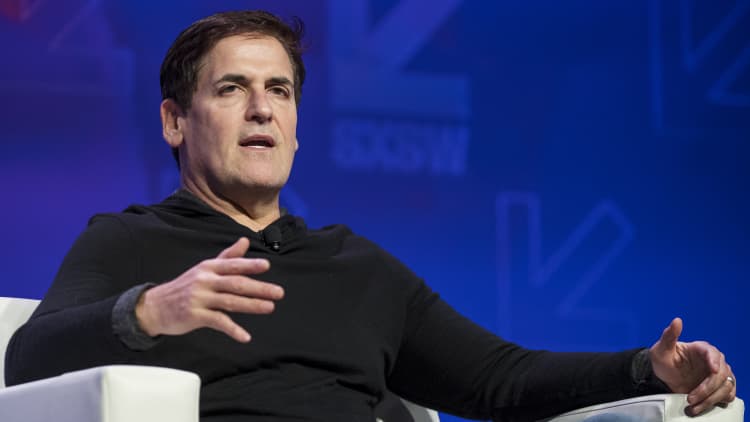Using ink, canvas and a complex artificial intelligence algorithm, three 25-year-olds in Paris are shaking up the art world.
Hugo Caselles-Dupré, Pierre Fautrel and Gauthier Vernier founded Obvious, an art collective based in Paris, in 2017, with the goal of proving that artificial intelligence can do more than operate driverless cars or transform manufacturing — it can be creative.
Now, their AI-created imagery is going to be tested by art buyers and critics at the first major auction of an AI-created portrait in October, recently announced by Christie's in New York. Christie's will be auctioning the portrait "Edmond De Belamy," which depicts a fictional man created by AI at Obvious, signed with a math equation.
"Edmond De Belamy"; source: Obvious and Christie's
The painting is worth an estimated 7,000€ to 10,000€, or about $8,000 to $11,000, according to Obvious' website, confirmed to CNBC Make It by a representative at Christie's.
"Everybody has their own definition of a work of art. I've tended to think human authorship was quite important — that link with someone on the other side," Richard Lloyd, International Head of Prints & Multiples at Christie's says. "But you could also say art is in the eye of the beholder. If people find it emotionally charged and inspiring then it is."
Caselles-Dupré, an expert in artificial intelligence among the three, is currently pursuing a doctorate in machine learning. Last year, he came across Generative Adversarial Networks in his research, known as GANs, which can study thousands of images and then produce one of its own.
"It's a kind of algorithm that creates a new image from a lot of examples," Fautrel explains to CNBC Make It. The three childhood friends decided to partner up on a project to use GANs to create new images based on examples from the 14th century through the 20th.
"We gave the algorithm 15,000 portraits and the algorithm understands what the rules of the portraits are, and creates another one," Fautrel says.
Obvious used this process to create not just the Edmond De Belamy portrait, but an entire family. The collection includes Le Comte De Belamy, an older patriarch, La Duchesse de Belamy, a well to-do dame in pink, and a young Madame De Belamy dressed in blue.
"We created 11 portraits," Fautrel says. "The idea of creating portraits was to speak to the most people ... to make everybody understand AI can be creative. This is one of the best ways."
Fautrel says he isn't sure how traditional art purveyors may react to the auction of Obvious' portrait in October, but he's hopeful that AI can be seen as a tool to enhance artists' work, not a threat to art itself.
"Photography, when it first appeared [in the 1800s], they got exactly the same criticisms that we are now," he says. "We can see [now] that no, photography is not destroying art, it is a new medium, a new way to do art. We know AI and art will be the same kind of step."
Don't miss: Mark Cuban says studying philosophy may soon be worth more than computer science—here's why
Like this story? Subscribe to CNBC Make It on YouTube!



